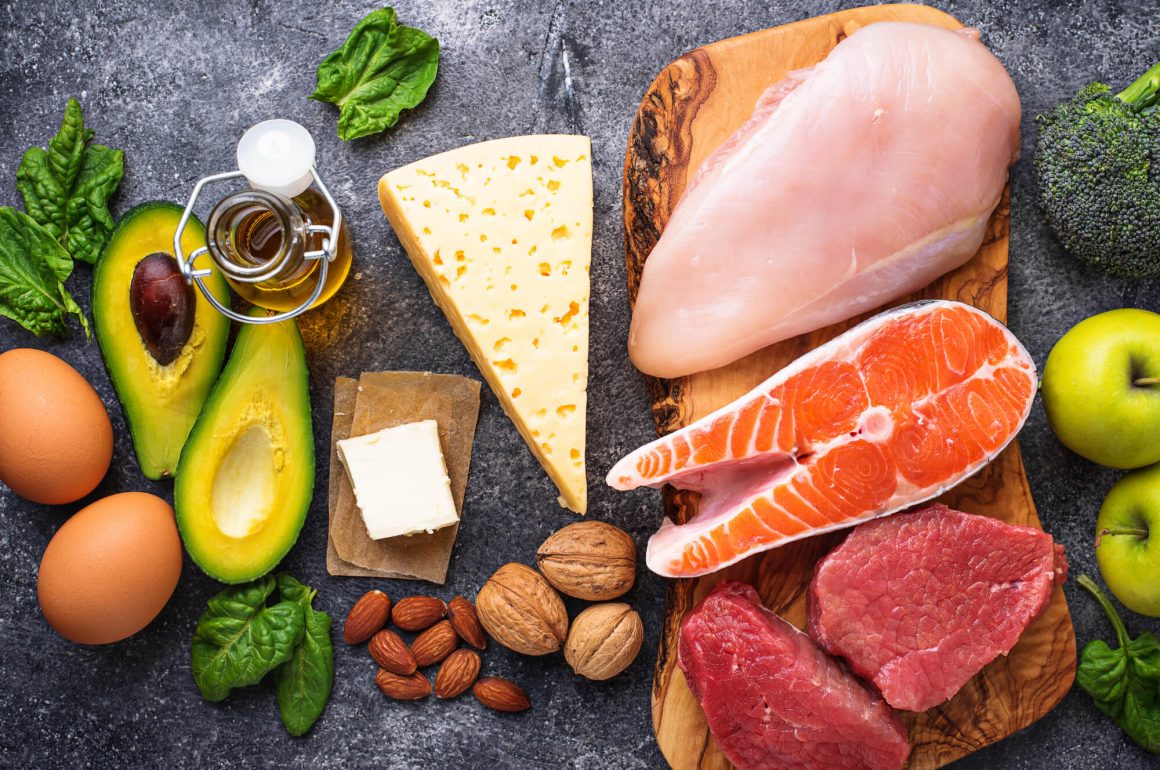What is Low Carb Diet: Everything You Need to Know
Discover what the low carb diet is, its benefits and how to implement it effectively in your routine.
The low carb diet is among the most popular dietary strategies for those seeking rapid weight loss and health improvement. With a method that significantly reduces carbohydrate consumption and prioritizes proteins and good fats, it promises effective results in a short time.
Unlike conventional diets where 50-55% of calories come from carbohydrates, low carb reduces this percentage to just 5-45% of daily consumption. But does it really work? And what precautions should we take when adopting it?
In this complete article, you'll discover everything about the low carb diet: how it works, benefits, allowed and prohibited foods, plus practical tips to implement it safely in your routine.
Navigation Menu
- What is Low Carb Diet
- How it Works and Why it Leads to Weight Loss
- Main Benefits
- Allowed and Prohibited Foods
- How to Do Low Carb Correctly
- 3-Day Sample Menu
- Care and Contraindications
- Tips for Success
What is Low Carb Diet
The low carb diet is a dietary pattern based on significantly reducing carbohydrate consumption and proportionally increasing proteins and healthy fats. While traditional nutrition recommends about 50-55% of calories from carbohydrates, low carb limits this percentage between 5% and 45%.
The fundamental principle is simple: by restricting carbohydrates, especially refined ones like sugar, white flour and sweets, the body is forced to seek energy from other sources. This leads to the process of burning stored fats, resulting in weight loss.
There are different levels of restriction in the low carb diet:
- Very low: 5-10% carbohydrates
- Low: 10-20% carbohydrates
- Moderate: 20-45% carbohydrates
Choosing the ideal level depends on individual goals, health status and professional guidance. It's essential to understand that it's not just about cutting carbohydrates, but making smarter and more nutritious food choices.

How it Works and Why it Leads to Weight Loss
To understand how the low carb diet promotes weight loss, we need to know the role of carbohydrates in the body. Carbohydrates are the body's preferred energy source, being quickly converted to glucose to fuel our cells.
When we consume excess carbohydrates, the body activates a storage mechanism. Excess glucose is converted to fat and stored in adipose tissues for future use. This is why excessive carbohydrate consumption is directly related to weight gain.
The low carb diet reverses this logic. With drastic carbohydrate reduction, the body enters a metabolic state called ketosis, where it begins breaking down stored fats to produce energy. This process is known as lipolysis.
Additionally, carbohydrate restriction helps regulate insulin levels, the hormone responsible for fat storage. With less circulating insulin, the body facilitates fat burning and reduces hunger sensation.
The result is faster weight loss in the first months, especially due to body water loss and subsequent fat burning. Studies show that people on low carb diets can lose 2 to 3 times more weight than those on conventional low-fat diets.
For those interested in combining diet with fitness, understanding muscle building principles can help optimize results while maintaining lean mass during weight loss.
Main Benefits
The low carb diet offers a series of benefits that go beyond weight loss. Scientific research proves various positive effects of this dietary pattern:
Accelerated weight loss: The main attraction of the diet is the speed with which results appear. In the first months, weight loss is significantly greater compared to other diets.
Reduced appetite: Increased consumption of proteins and good fats promotes greater satiety, helping you feel full for longer periods throughout the day.
Improved lipid profile: Contrary to old myths, the low carb diet can improve HDL cholesterol levels (good cholesterol) and reduce triglycerides, decreasing cardiovascular risk.
Glycemic control: For people with type 2 diabetes or insulin resistance, carbohydrate reduction helps stabilize blood sugar levels.
Reduced blood pressure: Many practitioners report decreased blood pressure, especially those who also reduce sodium.
Reduction of abdominal fat: The diet is particularly effective in reducing visceral fat, that located in the abdominal region and considered more dangerous for health.
Improved brain function: Some studies suggest that ketosis may have neuroprotective effects and improve concentration.

Allowed and Prohibited Foods
Foods Allowed on Low Carb Diet
Proteins: Lean red meats, chicken, turkey, fish (especially salmon, tuna, sardines), eggs, seafood.
Good fats: Extra virgin olive oil, coconut oil, avocado, nuts (almonds, walnuts, pecans), butter, cream.
Dairy: Natural cheeses, plain Greek yogurt, cream cheese, cottage cheese.
Low carb vegetables: Green leaves (lettuce, arugula, spinach), broccoli, cauliflower, zucchini, eggplant, cucumber, tomato, bell pepper, asparagus.
Fruits in moderation: Strawberry, raspberry, blackberry, avocado, coconut, lemon (small portions).
Beverages: Water, unsweetened teas, coffee, sparkling water.
Prohibited or Restricted Foods
Sugars: Refined sugar, honey, molasses, soft drinks, sweets, ice cream, cakes, pies.
Grains and cereals: Wheat, oats, rice, corn, quinoa, rye, barley and their derivatives (breads, pasta, cookies).
Tubers: Potato, sweet potato, cassava, yam, parsnip.
Sugar-rich fruits: Banana, grape, mango, pineapple, watermelon (in large quantities).
Legumes: Beans, lentils, chickpeas, peas (can be consumed in moderation depending on diet phase).
Processed foods: Processed meats, processed products, margarine, refined vegetable oils.
How to Do Low Carb Correctly
First Steps
Ideally, start gradually, especially if your current diet is rich in carbohydrates. An abrupt transition can cause uncomfortable symptoms like headache, irritability and fatigue.
Week 1-2: Eliminate simple sugars, sweets and soft drinks. Keep a small portion of complex carbohydrates.
Week 3-4: Reduce breads, pasta and cereals by half. Increase vegetables and proteins.
Week 5+: Implement the complete low carb diet, keeping only vegetables as carbohydrate source.
Meal Planning
Breakfast: Scrambled eggs with cheese and avocado, or Greek yogurt with nuts.
Lunch and dinner: Always include a protein (meat, fish, chicken), sautéed vegetables or salad, and a good fat source.
Snacks: Nuts, cheeses, boiled eggs, or a low carb protein shake.
It's essential to stay hydrated, drinking at least 2-3 liters of water per day, as the diet may have a diuretic effect initially.
Recommended Duration
The most restrictive phase (5-10% carbohydrates) should be maintained for a maximum of 3 months. After this period, it's recommended to gradually increase carbohydrate intake to avoid negative effects on metabolism.
For sustainable long-term results, many people adopt a cyclical approach, alternating periods of greater and lesser carbohydrate restriction.
3-Day Sample Menu
Day 1
Breakfast: 2 scrambled eggs with mozzarella cheese + black coffee + 1/2 avocado
Morning snack: Handful of almonds
Lunch: Grilled salmon + green salad with olive oil + sautéed broccoli
Afternoon snack: Plain Greek yogurt with chia seeds
Dinner: Baked chicken breast + sautéed zucchini + arugula salad
Day 2
Breakfast: Spinach omelet with cheese + coffee with cream
Morning snack: Cucumber slices with cream cheese
Lunch: Sautéed ground beef + zucchini "noodles" + mixed salad
Afternoon snack: Mixed nuts
Dinner: Baked fish + cauliflower gratin + cherry tomatoes
Day 3
Breakfast: Avocado smoothie with coconut milk + coffee
Morning snack: String cheese
Lunch: Shredded chicken + green leaf salad + baked eggplant
Afternoon snack: Seasoned boiled eggs
Dinner: Grilled pork chop + asparagus + cucumber salad
Note: This is just an informative example. For safe and effective results, always seek a nutritionist to create a personalized menu for your needs.
Care and Contraindications
Who Should Not Follow
The low carb diet is not suitable for everyone. Pregnant and breastfeeding women should not follow this type of restriction, as they need extra energy for baby development.
Children and adolescents in growth phase should also avoid it, as well as people with kidney or liver problems. Type 1 diabetics need strict medical supervision.
Possible Side Effects
In the first days, it's common to experience "low carb flu," which includes:
- Headache
- Fatigue
- Irritability
- Constipation
- Bad breath
- Difficulty concentrating
These symptoms usually disappear within a week as the body adapts to the new metabolic pattern.
Importance of Professional Guidance
A specialized nutritionist can:
- Assess if the diet is suitable for your profile
- Calculate individual caloric needs
- Monitor possible nutritional deficiencies
- Adjust the plan according to results
- Guide the transition to maintenance nutrition
Regular medical check-ups are essential to monitor markers like cholesterol, kidney function and vitamin levels.
Tips for Success on Low Carb Diet

Preparation is Fundamental
Clean the pantry: Remove temptations like sweets, cookies and snacks.
Plan meals: Having a weekly menu avoids impulsive decisions.
Prepare practical snacks: Always keep boiled eggs, nuts or cheeses at hand.
Smart Substitutes
Instead of rice: Try cauliflower rice, which can be found ready-made or made at home.
Instead of pasta: Use spiralized zucchini or spaghetti squash to create vegetable "noodles."
Instead of sugar: Natural sweeteners like stevia or erythritol in small amounts.
Strategic Supplementation
During the low carb diet, some supplements can be useful to ensure you're meeting all your nutritional needs. Quality supplements can help fill any gaps in your diet and support your overall health goals.
NaturalSlim Metabolic Protein Powder with Collagen is an excellent option for those following a low-carb lifestyle, providing high-quality protein while supporting skin, hair, and bone health with added collagen.
Nutritional Education
To deepen your knowledge about low carb nutrition and anti-inflammatory eating, some books are excellent references:
The Complete Anti-Inflammatory Diet for Beginners offers a comprehensive guide with easy recipes that complement the low-carb approach while focusing on reducing inflammation in the body.
For those interested in optimizing their metabolism and energy levels, Good Energy: The Surprising Connection Between Metabolism and Limitless Health provides valuable insights into how dietary choices affect our metabolic health.
Women following low-carb diets may find Fast Like a Girl: A Woman's Guide to Using the Healing Power of Fasting particularly helpful for understanding how to combine fasting strategies with low-carb eating for optimal hormonal balance.
Physical Exercise
Combine the diet with appropriate physical activities. Initially, low-intensity exercises are more indicated while the body adapts. Later, strength training can enhance results and help maintain muscle mass during weight loss.
For tracking your fitness progress, consider investing in quality fitness smartwatches that can monitor your heart rate, activity levels, and sleep patterns.
Results Monitoring
Besides the scale, measure body circumferences and take photos to track evolution. Fat loss doesn't always reflect immediately on weight, especially when there's muscle mass gain.
Consider incorporating some form of cardiovascular exercise into your routine. If you prefer working out at home, check out our guide on the best home treadmills to find equipment that fits your space and budget.
Conclusion
The low carb diet can be a powerful tool for those seeking rapid weight loss and metabolic health improvement. Its benefits go beyond weight loss, including glycemic control, blood pressure reduction and lipid profile improvement.
However, it's crucial to understand that it's not a magic solution. Success depends on planning, consistency and, mainly, adequate professional guidance. The most restrictive phase should be temporary, evolving to a sustainable long-term dietary pattern.
Remember: each body responds differently. What works for one person may not be ideal for another. Therefore, investing in personalized nutritional guidance is always the best choice to achieve safe and lasting results.
If you're considering starting a low carb diet, start slowly, observe your body's reactions and don't hesitate to seek professional help. With the right approach, this could be the change you needed to achieve your health and wellness goals.
For more information about different dietary approaches, you might also want to explore ketogenic diet fundamentals, which shares some similarities with low-carb eating but with even more carbohydrate restriction.

